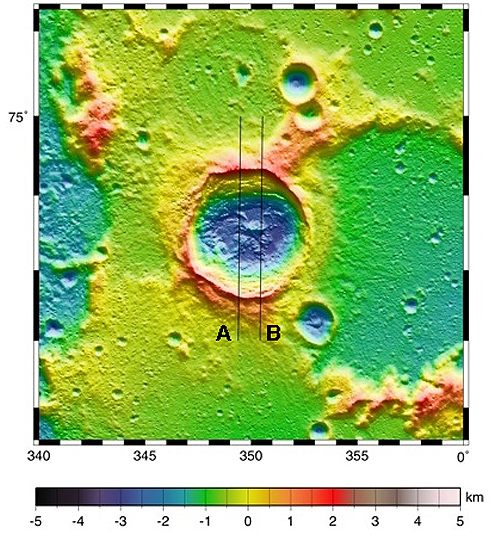
Anaxagoras Crater
It's all about location, location, location! Anaxagoras Crater (diameter 50 km) is well studied because of its location in a part of the lunar crust called the highlands. The lunar highlands are primarily composed of a rock called anorthosite - a rock made mainly of the mineral feldspar - that represents the earliest crust to form on the Moon. The central peak of Anaxagoras is pure anorthosite, which means that the rocks have likely preserved information about early lunar formation. This image shows the ability of LOLA to resolve detailed faults along the crater walls (indicated by the arrow), as well as a distinctly raised rim along the north and south edges. LOLA passed over Anaxagoras several times on January 25, 2011. The figure shows two successive sets of profiles. In one minute, LOLA traverses about three degrees of latitude, or 90 km, and makes about 8000 individual altimetric measurements. Five such profiles, spaced 20 m apart, are shown here in different colors, offset by 0.25 km. LOLA measures faults along the southern wall, seen as outward-sloping stairstep-like features. Traversing the crater floor, LOLA crosses a km-high central peak and then ascends the northern wall of this 4-km deep crater. Two hours later, a similar view is obtained. Thousands of such profiles, occurring every two weeks, are used to create the color-shaded image of the terrain.
